Longlong Xu
ChatTS: Aligning Time Series with LLMs via Synthetic Data for Enhanced Understanding and Reasoning
Dec 04, 2024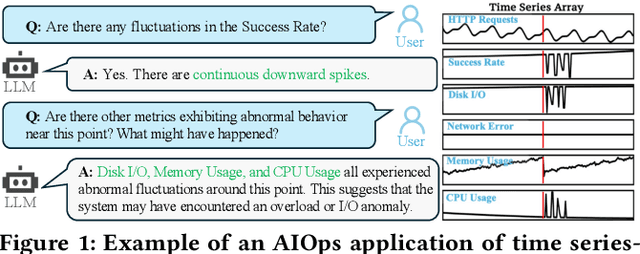


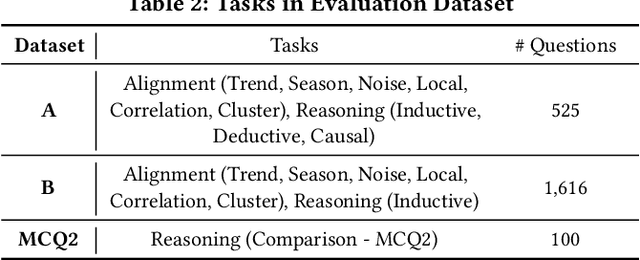
Abstract:Understanding time series is crucial for its application in real-world scenarios. Recently, large language models (LLMs) have been increasingly applied to time series tasks, leveraging their strong language capabilities to enhance various applications. However, research on multimodal LLMs (MLLMs) for time series understanding and reasoning remains limited, primarily due to the scarcity of high-quality datasets that align time series with textual information. This paper introduces ChatTS, a novel MLLM designed for time series analysis. ChatTS treats time series as a modality, similar to how vision MLLMs process images, enabling it to perform both understanding and reasoning with time series. To address the scarcity of training data, we propose an attribute-based method for generating synthetic time series with detailed attribute descriptions. We further introduce Time Series Evol-Instruct, a novel approach that generates diverse time series Q&As, enhancing the model's reasoning capabilities. To the best of our knowledge, ChatTS is the first MLLM that takes multivariate time series as input, which is fine-tuned exclusively on synthetic datasets. We evaluate its performance using benchmark datasets with real-world data, including six alignment tasks and four reasoning tasks. Our results show that ChatTS significantly outperforms existing vision-based MLLMs (e.g., GPT-4o) and text/agent-based LLMs, achieving a 46.0% improvement in alignment tasks and a 25.8% improvement in reasoning tasks.
OpsEval: A Comprehensive Task-Oriented AIOps Benchmark for Large Language Models
Oct 12, 2023
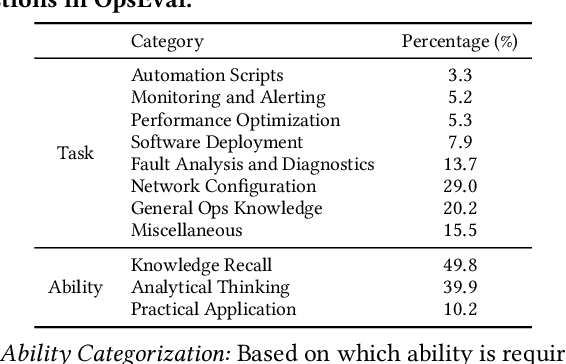
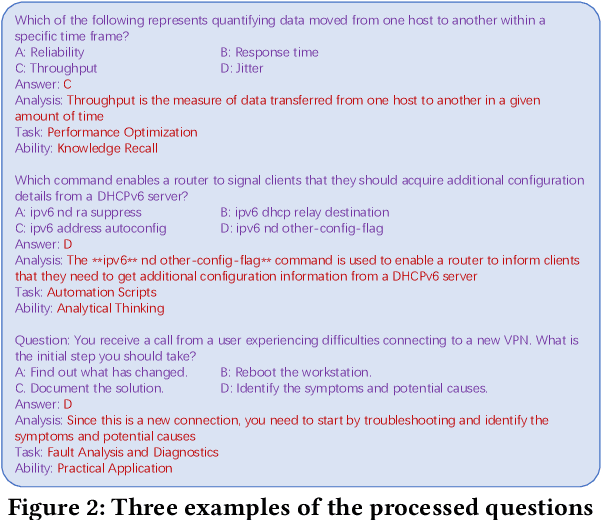
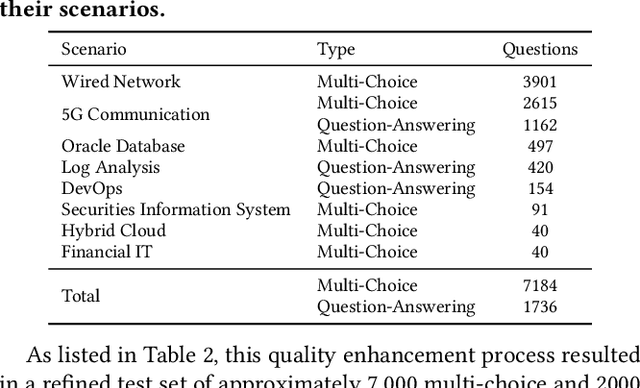
Abstract:Large language models (LLMs) have exhibited remarkable capabilities in NLP-related tasks such as translation, summarizing, and generation. The application of LLMs in specific areas, notably AIOps (Artificial Intelligence for IT Operations), holds great potential due to their advanced abilities in information summarizing, report analyzing, and ability of API calling. Nevertheless, the performance of current LLMs in AIOps tasks is yet to be determined. Furthermore, a comprehensive benchmark is required to steer the optimization of LLMs tailored for AIOps. Compared with existing benchmarks that focus on evaluating specific fields like network configuration, in this paper, we present \textbf{OpsEval}, a comprehensive task-oriented AIOps benchmark designed for LLMs. For the first time, OpsEval assesses LLMs' proficiency in three crucial scenarios (Wired Network Operation, 5G Communication Operation, and Database Operation) at various ability levels (knowledge recall, analytical thinking, and practical application). The benchmark includes 7,200 questions in both multiple-choice and question-answer (QA) formats, available in English and Chinese. With quantitative and qualitative results, we show how various LLM tricks can affect the performance of AIOps, including zero-shot, chain-of-thought, and few-shot in-context learning. We find that GPT4-score is more consistent with experts than widely used Bleu and Rouge, which can be used to replace automatic metrics for large-scale qualitative evaluations.
Towards Effective Adversarial Textured 3D Meshes on Physical Face Recognition
Mar 28, 2023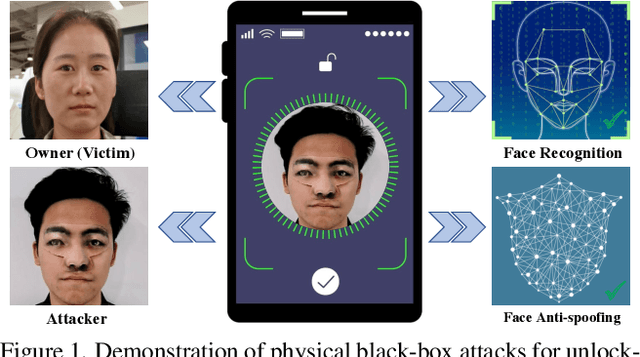


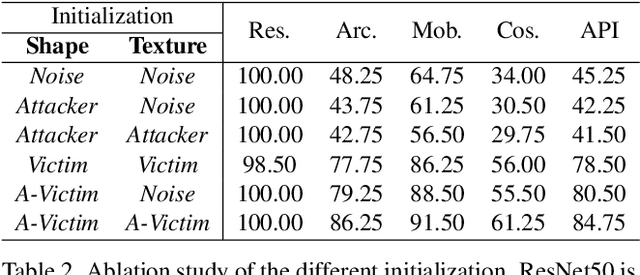
Abstract:Face recognition is a prevailing authentication solution in numerous biometric applications. Physical adversarial attacks, as an important surrogate, can identify the weaknesses of face recognition systems and evaluate their robustness before deployed. However, most existing physical attacks are either detectable readily or ineffective against commercial recognition systems. The goal of this work is to develop a more reliable technique that can carry out an end-to-end evaluation of adversarial robustness for commercial systems. It requires that this technique can simultaneously deceive black-box recognition models and evade defensive mechanisms. To fulfill this, we design adversarial textured 3D meshes (AT3D) with an elaborate topology on a human face, which can be 3D-printed and pasted on the attacker's face to evade the defenses. However, the mesh-based optimization regime calculates gradients in high-dimensional mesh space, and can be trapped into local optima with unsatisfactory transferability. To deviate from the mesh-based space, we propose to perturb the low-dimensional coefficient space based on 3D Morphable Model, which significantly improves black-box transferability meanwhile enjoying faster search efficiency and better visual quality. Extensive experiments in digital and physical scenarios show that our method effectively explores the security vulnerabilities of multiple popular commercial services, including three recognition APIs, four anti-spoofing APIs, two prevailing mobile phones and two automated access control systems.
 Add to Chrome
Add to Chrome Add to Firefox
Add to Firefox Add to Edge
Add to Edge